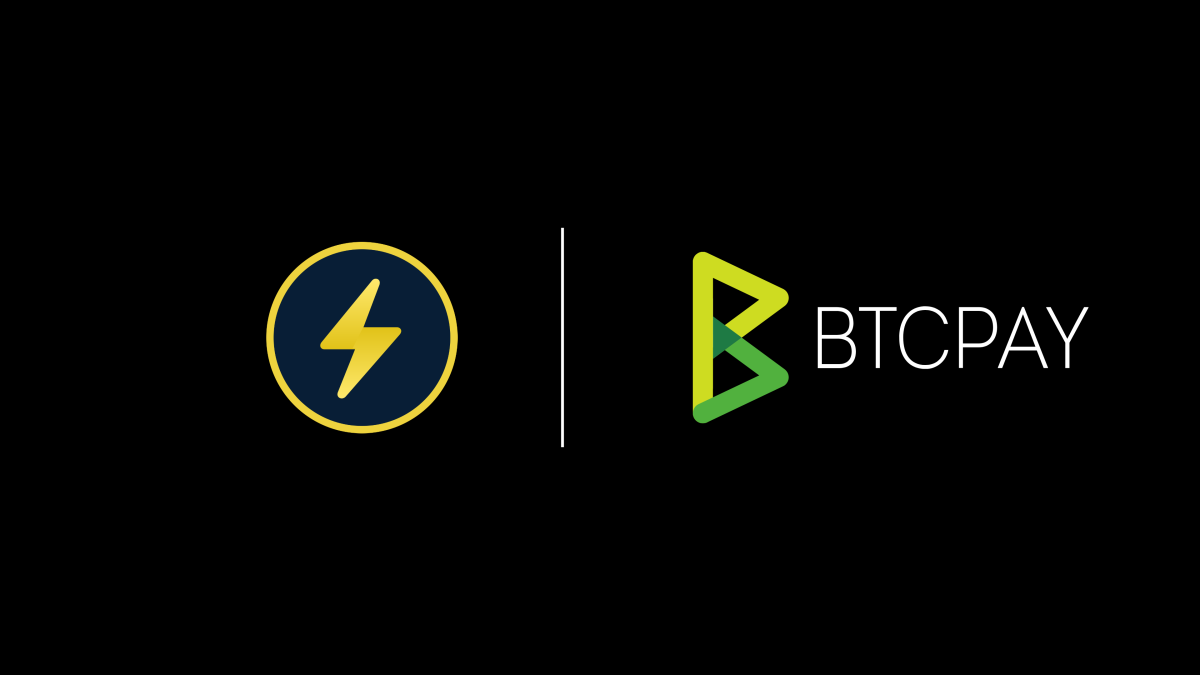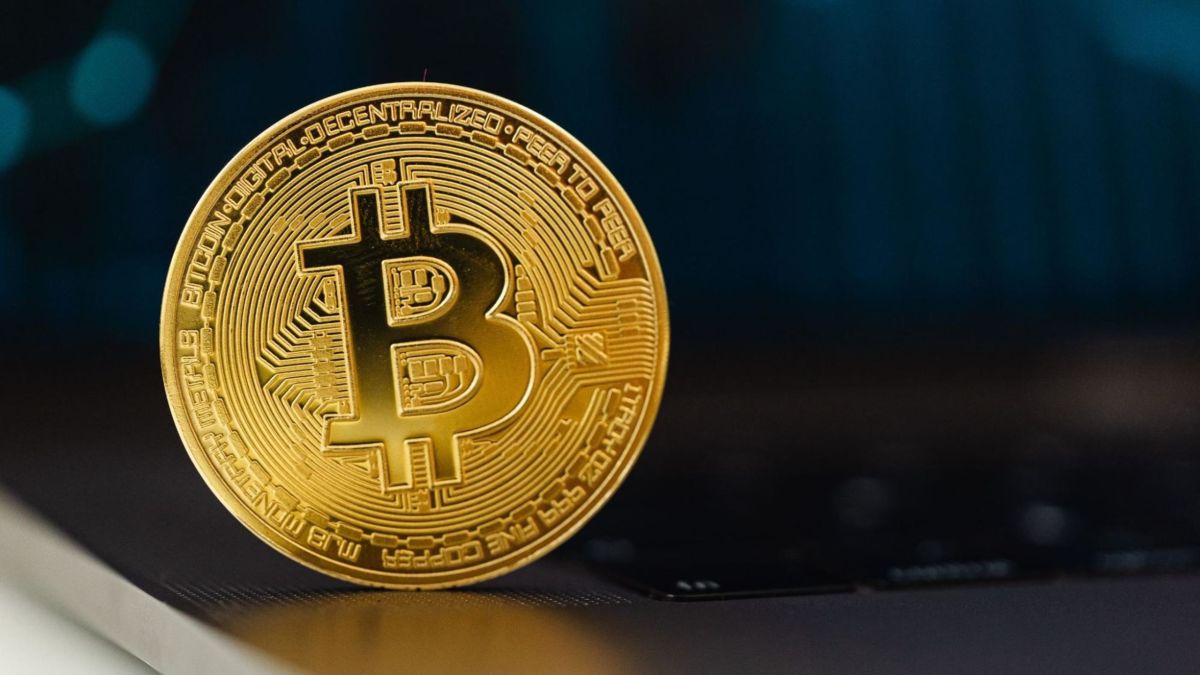Month: September 2024
Maximizing Bitcoin Gains with ETF Data
Maximizing Bitcoin Gains with ETF Data
Since the introduction of Bitcoin Exchange Traded Funds (ETFs) in early 2024, Bitcoin has reached new all-time highs, with multiple months of double-digit gains. However, as impressive as this performance is, there’s a way to significantly outperform Bitcoin’s returns by utilizing ETF data to guide your trading decisions.
Bitcoin ETFs and Their Influence
Bitcoin ETFs, launched in January 2024, have quickly amassed large amounts of Bitcoin. These ETFs, tracked by various funds, allow institutional and retail investors to gain exposure to Bitcoin without directly owning it. These ETFs have accumulated billions of USD worth of BTC, and tracking this cumulative flow is essential for monitoring institutional activity in Bitcoin markets, helping us gauge whether institutional players are buying or selling.
Figure 1: BTC ETF Cumulative Flows (USD) have surpassed $18.5b. View Live Chart
ETF daily inflows denominated in BTC indicate that large-scale investors are accumulating Bitcoin, while daily outflows suggest they are exiting positions during that trading period. For those looking to outperform Bitcoin’s already strong 2024 performance, this ETF data offers a strategic entry and exit point for Bitcoin trades.
Figure 2: BTC ETF Daily Flows (BTC) show regular accumulation of over 10,000 BTC per day. View Live Chart
A Simple Strategy Based on ETF Data
The strategy is relatively straightforward: buy Bitcoin when ETF inflows are positive (green bars) and sell when outflows occur (red bars). Surprisingly, this method allows you to outperform even during Bitcoin’s bullish periods.
This strategy, while simple, has consistently outperformed the broader Bitcoin market by capturing price momentum at the right moments and avoiding potential downturns by following institutional trends.
Figure 3: Each trade following this institutional inflow/outflow strategy.
The Power of Compounding
The real secret to this strategy lies in compounding. Compounding gains over time significantly boosts your returns, even during periods of consolidation or minor volatility. Imagine starting with $100 in capital. If your first trade yields a 10% return, you now have $110. On the next trade, another 10% gain on $110 brings your total to $121. Compounding these gains over time, even modest wins, accumulate into significant profits. Losses are inevitable, but compounding wins far outweigh the occasional dip.
Since the launch of the Bitcoin ETFs, this strategy has provided over 100% returns during a period in which just holding BTC has returned roughly 37%, or even compared to buying Bitcoin on the ETF launch day and selling at the exact all-time high, which would have returned approximately 59%.
Figure 4: Over 100% compounded gains since ETF launch following this strategy.
Can Further Upside Be Expected?
Recently, we’ve begun to see a sustained trend of positive ETF inflows, suggesting that institutions are once again heavily accumulating Bitcoin. Since September 19th, every day has seen positive inflows, which, as we can see, have often preceded price rallies. BlackRock and their IBIT ETF alone have accumulated over 379,000 BTC since inception.
Figure 5: BlackRock alone has accumulated over 379,000 BTC in just a few months. View Live Chart
Conclusion
Market conditions can change, and there will inevitably be periods of volatility. However, the consistent historical correlation between ETF inflows and Bitcoin price increases makes this a valuable tool for those looking to maximize their Bitcoin gains. If you’re looking for a low-effort, set-it-and-forget-it approach, buy-and-hold may still be suitable. However, if you want to try and actively increase your returns by leveraging institutional data, tracking Bitcoin ETF inflows and outflows could be a game-changer.
For a more in-depth look into this topic, check out a recent YouTube video here: Using ETF Data to Outperform Bitcoin [Must Watch]
Sell an October election year seasonal bounce in US dollar: BofA
Post Content
Tornado Cash Loses Motion to Dismiss
The judge in the Tornado Cash case delivered an oral ruling today, rejecting both the Defense’s motion to compel discovery and their motion to dismiss the charges. This represents a massive setback for the Defense, and the judge’s reasoning may not bode well for developers and projects going forward.
Motion to Compel
The Defense’s motion to compel discovery sought to access a broad range of government communications, including exchanges with foreign authorities under the Mutual Legal Assistance Treaty (MLAT) and with domestic agencies like the Office of Foreign Assets Control (OFAC) and the Financial Crimes Enforcement Network (FinCEN). Citing Federal Rule of Criminal Procedure 16, the Defense argued that these materials were essential to understanding the government’s case and could potentially include exculpatory evidence. The judge, however, made it clear that Rule 16 imposes a stringent requirement: the Defense must show that the requested information is material to their case, not merely speculate on its potential usefulness.
The court dismissed the Defense’s arguments as speculative, noting that references to what the information “might” or “could” reveal do not meet the necessary standard for materiality. For example, the Defense argued that MLAT communications with the Dutch government might shed light on the evidence against Tornado Cash or reveal the government’s investigative theories. The judge found this reasoning unpersuasive, emphasizing that materiality cannot be established through conjecture or vague assertions.
The court similarly rejected the Defense’s request for all communications between the government and OFAC and FinCEN. Although the Defense claimed these documents were necessary to understand the government’s theories and potential witnesses, the judge concluded that the Defense failed to demonstrate how these communications were directly relevant to the charges at hand. The court reiterated that the burden is on the Defense to show a specific link between the requested documents and their defense strategy, a burden they did not meet.
When the Defense suggested an in-camera review—a private examination by the judge of the requested documents—to determine their materiality, the court refused. The judge argued that granting such a request based on speculative assertions would set a dangerous precedent, effectively forcing in-camera reviews in all criminal cases when a defendant speculates about the relevance of certain documents. This, the judge stressed, would undermine the purpose of Rule 16 and transform the pretrial discovery process into an unrestrained search for potentially helpful evidence.
The Defense also raised concerns under Brady v. Maryland, arguing that the government might be withholding exculpatory or impeachable evidence. While the court acknowledged the government’s obligations under Brady, it found no indication that these duties had been neglected. Without concrete evidence suggesting the government was withholding information, the court saw no reason to compel additional disclosures. The judge cautioned that while the Defense’s arguments were theoretically possible, they lacked the factual support needed to warrant the court’s intervention. She did say, however, that if she later finds that the government has “interpreted its obligations too narrowly” then there will be “unfortunate consequences for their case.”
Motion to Dismiss
The motion to dismiss presented a much more significant set of issues. Central to the Defense’s argument was the definition of a “money transmitter” under the Bank Secrecy Act (BSA). The Defense contended that Tornado Cash did not qualify as a money transmitter because it did not exercise control over users’ funds; it merely facilitated the movement of cryptocurrencies. The court, however, rejected this narrow interpretation. The judge clarified that the BSA’s scope does not require the control of the funds; Tornado Cash’s role in facilitating, anonymizing, and transferring cryptocurrency was sufficient to bring it within the statute’s ambit. The judge likened Tornado Cash to custodial mixers, which have been deemed money transmitting businesses.
Further complicating the Defense’s argument was their reliance on the 2019 FinCEN guidance, which uses a four-factor test to determine whether a wallet provider is a money transmitter. The Defense claimed this guidance, which includes a “total independent control” standard, should apply to Tornado Cash. The court disagreed, stating that this standard is specific to wallet providers and does not extend to mixers like Tornado Cash. Consequently, Tornado Cash’s lack of “total independent control” over funds was irrelevant to its classification as a money transmitter.
Another key point in the court’s analysis was the distinction between expressive and functional code under the First Amendment. The Defense argued that prosecuting Storm for his involvement with Tornado Cash was tantamount to punishing him for writing code, which they claimed was protected speech. The judge acknowledged that while code can be considered expressive, the specific use of code to facilitate illegal activities—such as money laundering or sanctions evasion—falls outside the bounds of First Amendment protection. The judge emphasized that the court must focus on the conduct enabled by the code, not merely the code itself. Even under intermediate scrutiny, which applies to content-neutral restrictions on speech, the judge found that the government’s interests in preventing money laundering and regulating unlicensed money transmission justified the restrictions imposed by the relevant statutes.
The court also addressed concerns about the immutability of Tornado Cash’s smart contracts, an issue raised by both parties. The judge acknowledged the existence of a factual dispute but noted that it was not a decisive factor in the current motion. However, the issue of immutability may play a role at trial in determining the extent of Storm’s control over the service and his responsibility for its operations.
In concluding remarks, the judge underscored that while the use of code to communicate ideas may be protected under the First Amendment, using that code to facilitate illegal activities is not. This distinction is critical in the context of emerging technologies like blockchain, where the line between speech and conduct can be blurred. The court’s ruling serves as a reminder that the legal system is prepared to hold participants in the digital economy accountable, even as it grapples with the complexities of applying traditional legal principles to new and evolving technologies.
The full transcript of the ruling will be released once prepared by the court reporter.
This is a guest post by Colin Crossman. Opinions expressed are entirely their own and do not necessarily reflect those of BTC Inc or Bitcoin Magazine.
Dollar drops as data boost fades; Swiss franc gains following rate cut
Post Content
Proof of Reserves: Show Me the Money, Or It Didn’t Happen
If we claim to be an improvement on traditional finance, we had better start playing the part. It’s clear how Bitcoin fixes rampant monetary discretion. It’s clear, too, how Bitcoin changes your relationship with money—both financially because you’re more inclined to save an appreciating asset—as well as physically because you can do novel things like hold the GDP of a small island nation on a USB. There is one thing, however, that is slowly gaining acceptance and needs to be accepted if we are to truly improve on the mistakes of the past, and that’s Proof of Reserves.
Bitcoin has unique audit properties baked into the system itself. Bitcoin allows any third party to audit the entire money supply down to the smallest unit. A third party can do this for free, without any special privileges or permissions. It’s difficult to overestimate how novel and consequential this property of the Bitcoin protocol is and the implications of the guarantees it provides. For context, the total global supply of dollars is an estimate and not an exact number by any stretch of the imagination due to a variety of factors including the existence of physical and digital cash, as well as currency circulation abroad. The total number of gold in existence is also an estimate due to entirely different reasons mainly the lack of certainty when it comes to the volume of mined gold from different mines around the world, gold existing in private hands, gold hoards and stashes, new mining, recycling, and unreported sources. There is no global, trustless, source of truth for any money or commodity other than Bitcoin. And this should be Bitcoin’s driving force moving forward.
Proof of Reserves (PoR) has been an important part of the industry since near-inception. The infamous Mt. Gox collapse of 2014 set the stage for much needed transparency. The exchange was hacked, 850,000 BTC (~47,617,204,000 USD at the time of this article) were stolen and their customers were unaware. The funds were drained over the course of a few years before the actual collapse happened. A PoR system would have mitigated further loss of funds as their customers would have seen the exchange’s reserves depleting at an alarming rate. If this sounds more like recent memory than an ancient piece of Bitcoin history it’s because the same argument applies to FTX, and the same basic thing happened to FTX. If customers, and the wider market at-large, would have seen the exchanges BTC reserves depleting in real-time (or the fact that FTX had zero Bitcoin), systemic-risk would have been dramatically mitigated.
So, what do you think would happen if the single custodian holding 90% of the spot Bitcoin backing these ETF’s were hacked or and/or acted maliciously? Unless the public is notified by the exchange, millions of people would be holding billions of paper Bitcoin. The more we connect ourselves to traditional finance the more cross-risk there is between traditional financial markets and the crypto markets. There are two choices at this point as we continue to mature as an asset class- apply old security and risk management tools to this new technology, or apply new, more performant, standards that are risk-adjusted to ensure we don’t see a systemic collapse if a certain class of financial products experiences a shock.
The claim can be made that having auditors is sufficient, that we already have these tools in place and as regulated financial products, this is essentially already “taken care of.” This claim, itself, is valid as imposing audit controls to mitigate risk is, in fact, the best we’ve been able to do thus far as it relates to financial products. But any meaningful investigation into the function of auditors yields alarming results: PwC vs. BDO in the Colonial Bank Case (2017), Grant Thornton vs. PwC (Parmalat Scandal, 2003), BDO vs. Ernst & Young (Banco Espírito Santo, 2014), KPMG vs. Deloitte (Steinhoff Scandal, 2017), and this is only looking back 20 years. FTX and Enron both had auditors. We use auditors because we don’t trust the individuals running the organization and the best we’ve been able to do to date is defer trust over to a different set of people, outside the organization. But the inherent risk of trusting people and organizations has never been remediated until now. Enron’s biblical collapse was due to clear conflict of interests between them and their auditor—namely that Arthur Andersen was also providing lucrative consulting services to Enron in addition to their audit function and by extension helped them cook their books.
Bitcoin is different, it behaves and lives differently. It behaves differently because the cryptographic guarantees it exhibits is something incomparable to traditional assets. Just as anyone can audit the entire money supply in the system with trustless guarantees, so too can anyone audit the personal holdings of an individual, or corporation, or ETF, holding Bitcoin in a completely risk-less way. It’s an important note, that it is not risk-mitigated, but risk-less. Someone cryptographically proving to any other counterparty that they own Bitcoin for, say, a loan can do so with no question as to whether the person is the actual owner of the BTC. This can happen repeatedly, with little overhead, and can be monitored continuously in real-time. There is no titling, there is no external auditor, there is no reviewing of any books that needs to take place. That data can be ingested without question.
So, what does this mean for ETF products? It should be clear at this point that because ETF products are such a critical pillar of our modern financial system and because Bitcoin introduces unique risk paradigms that old audit standards are inadequately servicing, that new risk infrastructure needs to be applied to these products. The solution is simple and it is the same solution that has been crackling its way up through the ice we’re all standing on in an attempt to get some air. Require spot Bitcoin ETF products to implement and comply with Proof of Reserves regimes. They should be giving their investors the peace of mind that the underlying asset backing these ETF’s exists, that they are sitting in robust custody setups and are not being rehypothecated. A failure to do so, or an unwillingness to do so on the part of the ETF issuer speaks to the priorities of the issuer—namely that they either don’t understand the nature of this particular financial product or that they are more comfortable operating with opacity than transparency. A failure to implement this as a standard industry-wide is simply a ticking time-bomb.
Hoseki was created for this very purpose, to build the plumbing that makes financializing Bitcoin a reality starting with PoR. Hoseki helps individuals prove their reserves to counterparties through Hoseki Connect and through Hoseki Verified provides services to private and public corporates, and ETF issuers so they can publicly verify their Bitcoin holdings building better brands, redefining trust, and mitigating risk for a healthier and more robust financial ecosystem. Contact us at partnerships@hoseki.app to get your organization onboarded to Hoseki.
This is a guest post by Sam Abbassi. Opinions expressed are entirely their own and do not necessarily reflect those of BTC Inc or Bitcoin Magazine.
Fed’s rate-cutting cycle points to weaker dollar – BoA Securities
Post Content
Bitcoin Swap Service Boltz Launches BTCPay Server Plugin For Lightning Payments
Today, Boltz announced the launch of the Boltz BTCPay Plugin, the first feature of its kind, in open beta. The plugin lets merchants who use BTCPay Server easily accept bitcoin over Lightning before having it automatically swapped and stored non-custodially on the Liquid Network.
The “Nodeless” mode for the Boltz BTCPay Plugin utilizes Liquid Swaps to make the automatic swap from Lightning to Liquid the instant a Lightning invoice is paid. Using Liquid Swaps, Boltz BTCPay Plugin users can also swap bitcoin back to the mainchain if they prefer. The plugin comes with an integrated wallet system, which enables users to create or import both Liquid and mainchain wallets.
“Merchants can receive or accept bitcoin by swapping incoming Lightning payments into their Liquid wallets and, like this, they don’t have to operate a node,” Kilian, CEO of Boltz, told Bitcoin Magazine.
“What they are holding in the end is LBTC — Liquid BTC,” he added.
“We also want to give them an option to automatically swap back to the mainchain if they so choose. They can say, ‘Okay, if my Liquid Bitcoin balance reaches 0.1 bitcoin, 0.5 bitcoin, swap it back to the mainchain.’”
Merchants remain in control of their funds at all times while using the service.
Boltz designed the plugin to help alleviate the anxiety that comes with running and managing a Lightning node.
“Running and managing a Lightning node is no easy feat,” said Boltz CTO Michael in a press release. “Channel management is complex and inbound liquidity can be such an alien concept”.
Kilian echoed Michael’s sentiment, as he shared that “running your own Lightning node is neither a realistic nor recommended goal for many individuals, and even for professionals like merchants, as of today.”
Previous solutions for accepting Lightning payments without running a node were custodial, introduced counterparty risk or were only available in certain jurisdictions.
Given that this plugin is both brand new and the first of its kind, the team at Boltz noted that while the software is ready to be used, users should do so with caution because it could still have bugs. Kilian shared that the plugin indeed handled thousands of transactions and that Strainly, an online marijuana vendor, is now completely running on it.
“After one month testing the Boltz plugin in front of thousands of users, I can tell this truly is a game-changer,” said Alan, CEO of Strainly, who previously had mixed success using custodial Lightning solutions like LNBank and other Lightning Service Providers (LSPs) “Processing LN payments straight to and from a non-custodial Liquid wallet, plus automatically consolidating the Liquid balance to my non-custodial BTC wallet according to my own preset threshold: hands down the most impactful plugin ever released on BTCPay!”
Trump wild card for weaker dollar outlook – Capital Economics
Post Content
Citi shares its USD/JPY price forecast for 2025
Post Content
Arthur Hayes’s Family Office Funds Another Bitcoin Core Developer
Maelstrom, the family office of former BitMEX CEO Arthur Hayes, has awarded Jon Atack a one-year Bitcoin developer grant. He is the second recipient of Maelstrom’s grant program supporting open-source Bitcoin developers.
Jon is an experienced contributor to Bitcoin Core, having started in 2019. He was also recently made a maintainer of Bitcoin Improvement Proposals (BIPs).
In a statement, Arthur Hayes said, “We hope this financial support allows Jon to focus on his work on Bitcoin without worrying about income.” He emphasized the grant’s no-strings-attached nature, giving Atack freedom to work independently.
Bitcoin’s open-source codebase depends on voluntary developers, so grants help enable more contributors to work full-time. Proponents believe having more funded developers benefits Bitcoin’s ecosystem.
Jon said, “I’m concerned about human freedom, decentralization of power, individual empowerment, privacy and self-sovereignty. Bitcoin and open source software play a key part in striving for these causes.”
He plans to spend the year reviewing proposals and changes to improve Bitcoin Core and BIPs. Jon stated, “Bitcoin isn’t perfect. It needs further decentralization, continued vigilance, review, bug-fixing, updates, maintenance, and improved robustness, performance, privacy, scaling, documentation and user experience.”
Maelstrom aims to strengthen Bitcoin through no-strings grants to developers like Atack. Simultaneously, he is also receiving funding from another organization, OpenSats.








